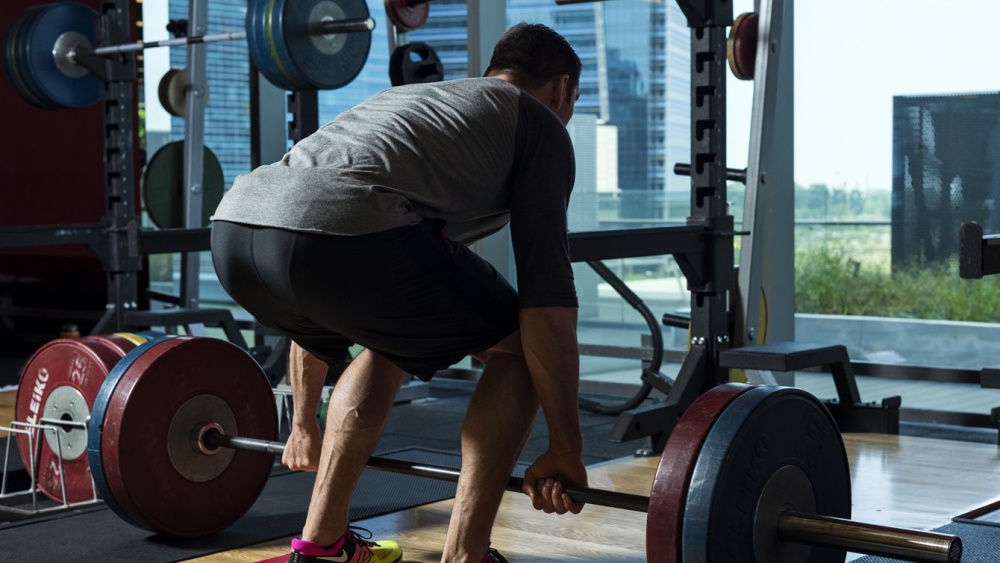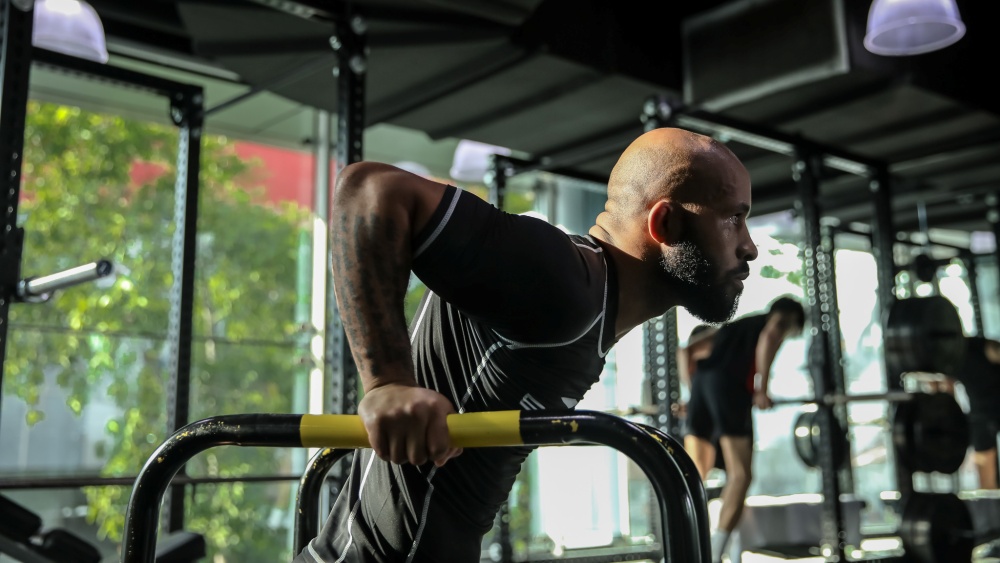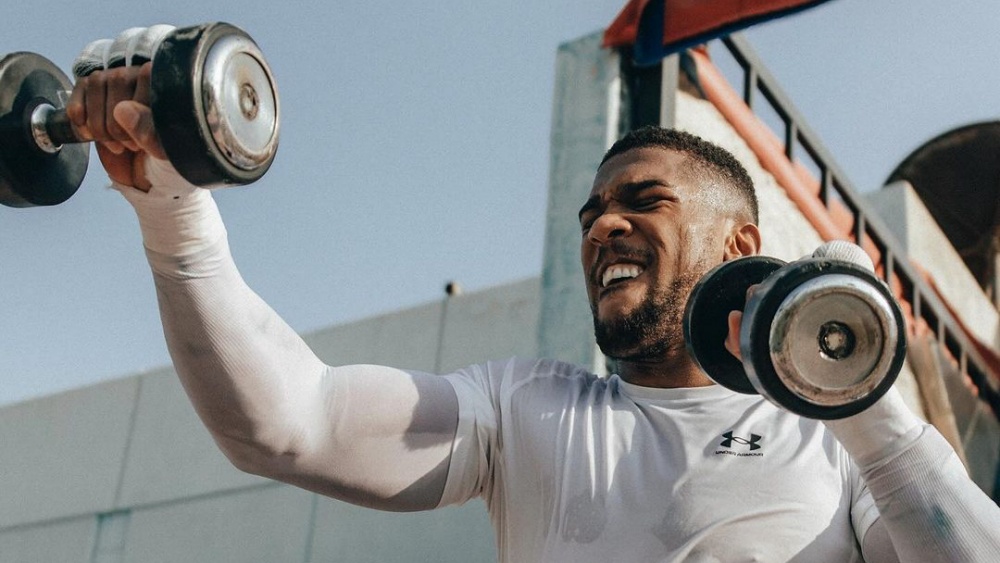Ever wonder what gives bodybuilders that coveted “V-shape” they always seem to have? It’s their big, well-defined lats. Your latissimus dorsi, aka lat, is a flat, large muscle that starts at the base of your spine and wraps around the side to connect with an upper arm. You have two identical lat muscles on both sides of your spine. That’s where the term “lats” comes from.
Your lats serve many vital functions, including stabilizing your upper body, shoulder extension (movements that move your arms out and up in front of you), and shoulder adduction (movements that pull your arms from out and down towards your torso).
Well-defined lats look like a pair of wings on your torso and significantly contribute to the V-taper. If you’re wondering, the other areas you’ll need to concentrate on to achieve that look are your shoulder muscles and minimizing fat around your midsection.
One of the keys to adding mass to your lats and improving their definition is performing a balanced mix of vertical and horizontal lat exercises. Yes, pull-ups are one of the best ways to activate your lats, but you want to hit them from different angles to maximize size and definition.
Other things you should keep in mind when performing exercises that target your lats include:
- Roll your shoulders back and bring your elbows towards your torso when performing exercises to force your lats to do more work.
- Progressively overload the weights you lift. The key to building muscle mass in any part of your body is gradually increasing the weight to force your muscles to grow. Increase the load by a few pounds every one or two weeks to maximize your gains. Lifting heavy gets you the best results, so aim for about four to six reps when working out with 85 percent of your one rep max (1RM) and about eight to ten reps when lifting 75 percent of your 1RM.
- Get enough calories. You need a caloric surplus to get your body to grow, so use an app or online calculator to determine your daily calorie intake and try to consume about 250 more calories. Make sure about 30 percent of your diet is protein. An excellent formula to use is to calculate your lean body mass in kilograms and multiply that number by 2.2 to get how many grams of protein you should consume daily to maximize muscle building.
- Make rest a priority since your body only grows when you’re at rest. Ensure you get at least eight hours of sleep per day and take a few days off lifting each week to give your muscles a chance to rest.
The Seven Best Exercises For Building Muscle Mass In Your Lats
Ready to get that V-taper? Let’s just right into our list of lat blasting exercises:
1) Deadlifts
Deadlifts are the best all-around exercise for building muscle mass in your posterior chain (back of your body) as it trains all the muscles in your rear side, like your lats, hamstrings, and glutes. It’s also one of those exercises you can easily load weights on, allowing you to lift as heavy as you wish, making it ideal for building muscle mass.
To maximize how much work your lats do on each lift, imagine crushing apples in your armpits as you perform the exercise. This keeps your lats engaged throughout the movement and puts your upper body in the correct position before starting your lifts.
The “dead” in deadlifts represents the dead weight you should be carrying on each rep. That means each rep should start from a dead stop on the ground.
Here’s how to perform a deadlift:
Approach the barbell on the ground and stand in front of it with half of your feet under each side of the bar. Your shins shouldn’t make contact with the bar in this position. Keep your feet about hip-width apart and your toes pointing outward at a 15-degree angle.
- Grab the bar without bending your legs. Keep your arms vertical and about shoulder-width apart.
- Get into the starting stance by bending your knees until your shins make contact with the bar. Half of each foot should still be on both sides of the bar.
- Straighten your back and lift your chest as you prepare for your lift. Take a deep breath and pull on the weight as you stand up straight. The bar should be gently brushing your legs as you pull. Pull until you lock your knees and knees.
- Return to the starting position by unlocking your knees and hips first. Hinge your hips back as you lower the weight while keeping your legs straight.
- Bend your legs once the weight is past your knees, so the barbell ends up in the middle of your feet.
2) Barbell Row
The barbell row is one of the most effective exercises for training muscles in your back, like your lats. It’s also an excellent way to build more muscular biceps. It involves using a barbell, as its name implies, so you can load up as much weight as you need to stick to the four to eight rep range. Use an underhanded grip when performing this exercise to make your lats carry more of the load. Here’s what the exercise looks like:
- Stand upright while holding a barbell in your hands with your palms facing you. Bend at your waist, so your torso is at a 45-degree angle from an imaginary parallel line at your waist. Keep your elbows close to your torso and your back straight.
- Pull the barbell towards your chest by squeezing your back muscles and slowly return to the starting position. Keep your elbows near your body the entire time, preventing your shoulders from carrying most of the load.
3) Pull-Ups
Pull-ups target most of the muscles in your back, particularly your lats. It also engages your chest, abs, and biceps. It’s an effective exercise to build mass in your back since you’re forced to carry your entire body weight. Once you’re able to get more than eight reps of push-ups, add some weights into the mix to make it more challenging.
Here’s how to perform a pull-up:
- Start standing right below a pull-up bar. Place your hands on the bar using an overhand grip (palms facing away from you) a little more than shoulder-width apart. If you’re not tall enough to reach the bar while standing, use an exercise box or something similar and sturdy to reach it.
- Tighten your core by pulling your belly button towards your spine and pull your shoulders down and back.
- Take a deep breath and exhale as you pull yourself towards the bar using only your arms and back muscles. Focus on pulling your elbows in towards your torso to make your lats carry more of the load.
- Pull until your chin is over the bar. Avoid swinging your legs or shrugging your shoulders during the movement. Pause for a second at the top of the movement and inhale before lowering yourself back to the starting position in a controlled manner.
Don’t worry if you’re unable to get a single pull-up if you’re new to the exercise. It’s considered one of the most challenging bodyweight exercises for a reason. You can build up the strength needed to perform pull-ups by using a resistance band to make the exercise easier, perform isometric holds, or do negative pull-ups. You can also use pull-up machines that do some of the work for you.
4) One-Arm Dumbbell Row
The one-arm dumbbell row allows you to train each half of your body independently, forcing each side to carry heavier weights, which is ultimately better for muscle growth. You perform the exercise with one arm while your other hand is planted on an exercise bench for support.
Here’s how to perform a one-arm dumbbell row:
- Grab a dumbbell with your right hand and bend over as you place your left hand and left knee on an exercise bench to support your weight. Keep your knees right under your hips and your hands under your shoulder. Your right leg should be extended behind you to maintain your balance.
- Stiffen your torso and abs to stabilize your spine and keep your back aligned with it. Your back should be flat in this position.
- Pull your shoulders back and down before starting and extend your right hand towards the floor without allowing your shoulder to move towards the floor or rotating your shoulder.
- Take a deep breath and exhale as you slowly pull the dumbbell towards you. Bend at the elbow and pull the dumbbell to your hips. Keep the rest of your body stationary during the pull.
- Pause for a second at the top and inhale as you slowly lower the dumbbell to the starting position without moving the rest of your body.
5) Seated Cable Row
While exercise machines aren’t always the first choice when it comes to building muscle mass, studies show that cable rows can be just as effective as barbell rows for targeting your lats. The big difference with cables is that they put tension on your muscles throughout the exercise, forcing them to do more work.
Here’s how you perform seated cable rows:
- Sit on the bench with your knees bent and grab the cable attachment. The commonly used triangular handles work best, but you can also perform the exercise using a bar. Adjust your body so that your knees are slightly bent, and you have to reach out to grab the handle without curling your lower back.
- Tighten your core as you pull on the handle and bring it towards your lower abdomen. Keep your torso still while pulling to avoid using momentum for assistance. You can force the middle and upper part of your back muscles to carry more of the load by bringing your shoulder blades together on each rep.
- Return the handle until your arms are fully stretched to complete a rep. Keep your back straight the entire time.
6) Chin-Up
The chin-up is another excellent bodyweight exercise for your lats. It is a variation of the pull-up that targets your biceps more, while the pull-up engages your lower trapezius muscles more. Many people who struggle with pull-ups tend to find chin-ups less challenging since their arms do more work.
Here’s how to perform a chin-up:
- Get into the starting position under a chin-up/pull-up bar. If you can’t reach the bar, use an exercise box to prop yourself up.
- Place your hands on the bar with an underhanded grip (palms facing you). This is the main difference between pull-ups and chin-ups. Keep your hands about shoulder-width apart. Take your feet off the ground, so your arms are fully supporting your weight.
- Take a breath and exhale as you pull yourself towards the bar. Keep pulling until your chin is over the bar. Drive your elbows towards your torso to make your lats do more work.
- Pause for a second at the top and inhale as you lower yourself to the starting position in a controlled manner.
7) Lat Pulldown
Lat pulldowns train every muscle in your back and can be just as effective as pull-ups. It’s also an excellent exercise for people looking to build up the strength for pull-ups since both exercises target the same muscles.
Here’s how to perform a lat pulldown:
- Sit on the pulldown seat and keep your feet flat on the floor. Adjust the bar’s height so you can grab it with outstretched hands without standing up fully. If the station has thigh pads, adjust them, so they prevent you from moving out of a seated position during your reps.
- Grab the bar with an overhand grip (palms facing away from you), with your hands about shoulder-width apart.
- Take a deep breath and exhale as you pull the bar down towards you. Keep pulling until it is the same level as your chin. Keep your upper body as still as possible when pulling on the bar.
- Pause for a second at chin level, and slowly return the bar to the starting position. Don’t allow the weight plates to touch during the negative portion of your rep. The plates shouldn’t make contact until you’re done with your reps
You may also like:

















